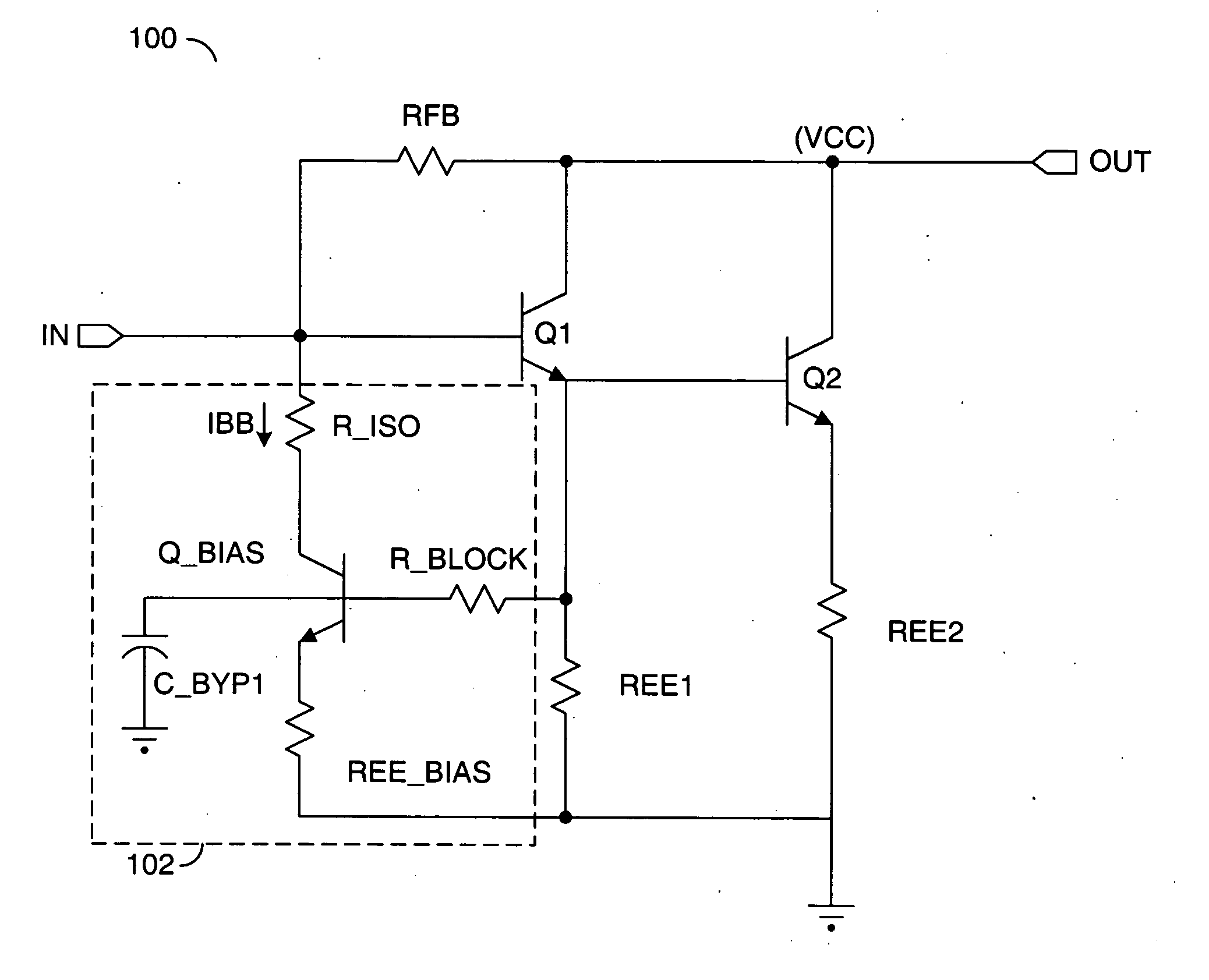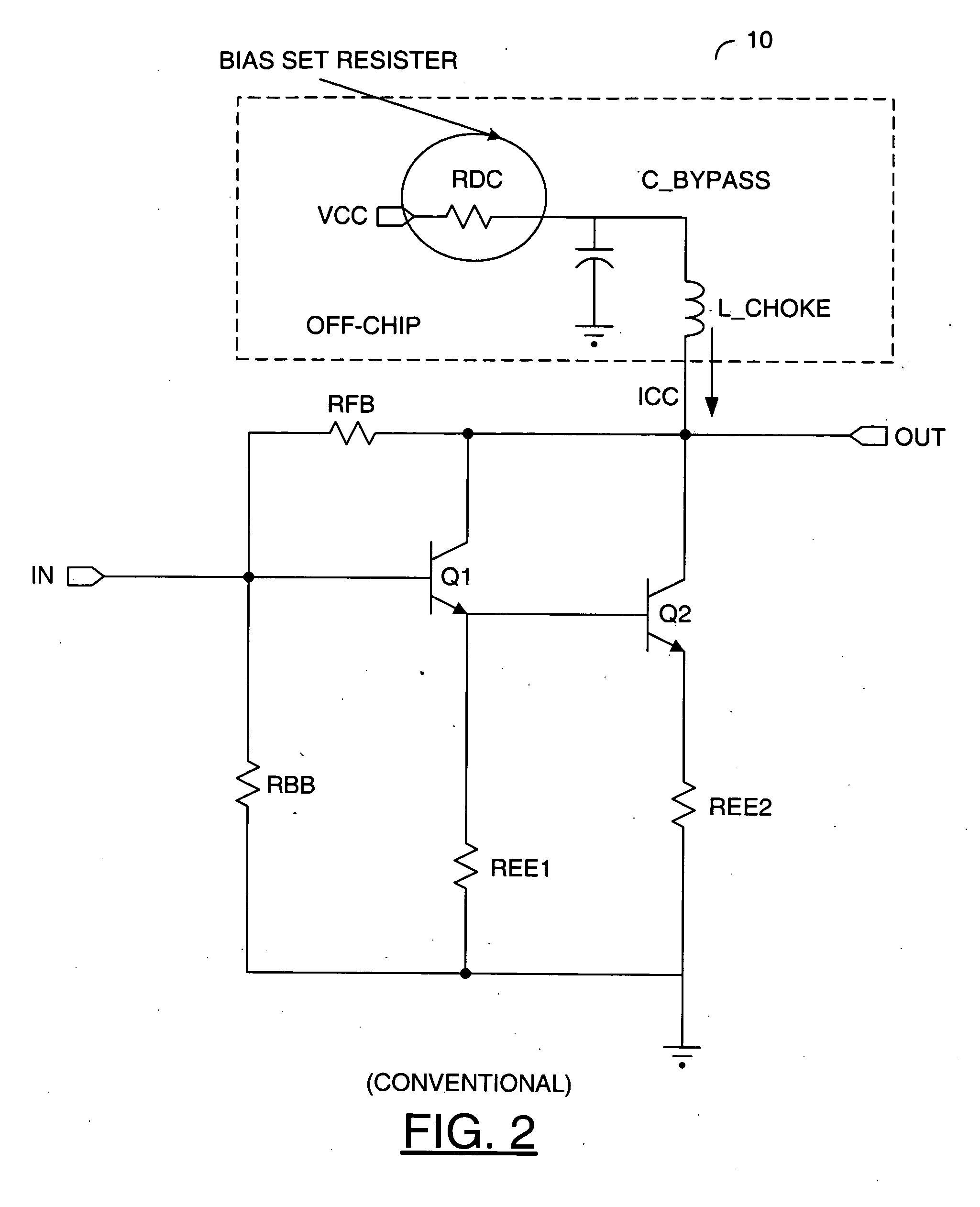Self-biased darlington amplifier
a darlington amplifier and self-biased technology, applied in the direction of amplifiers, amplifiers with semiconductor devices only, amplifiers, etc., can solve the problems of reducing the output voltage and rf headroom provided to the darlington output stage, reducing the maximum output power capability, etc., to improve output power efficiency and linearity, increase the voltage supplied, and reduce the effect of temperature sensitivity
- Summary
- Abstract
- Description
- Claims
- Application Information
AI Technical Summary
Benefits of technology
Problems solved by technology
Method used
Image
Examples
Embodiment Construction
[0032] The present invention may implement a self-bias Darlington Gain Block that may (i) eliminate a bias resistor (e.g., RDC), (ii) increase output voltage headroom, (iii) improve stability over temperature and supply voltage (e.g., Vcc) variations, and / or (iv) enable class AB biasing. In one example, the present invention may be implemented in a SOT-89 package. However, other packages, such as other 3-pin packages, may be implemented to meet the design criteria of a particular implementation.
[0033] Referring to FIG. 6, a diagram of a circuit 100 illustrating a preferred embodiment of the present invention is shown. The circuit 100 generally comprises a Darlington gain block 102, a capacitor (e.g., C_BYPASS) and an inductor 104. The inductor 104 may provide a radio frequency (RF) choke. The Darlington gain block 102 generally presents a signal (e.g., OUT) in response to a signal (e.g., IN) and a current presented through the inductor 104. The circuit 100 is implemented without th...
PUM
 Login to View More
Login to View More Abstract
Description
Claims
Application Information
 Login to View More
Login to View More - R&D
- Intellectual Property
- Life Sciences
- Materials
- Tech Scout
- Unparalleled Data Quality
- Higher Quality Content
- 60% Fewer Hallucinations
Browse by: Latest US Patents, China's latest patents, Technical Efficacy Thesaurus, Application Domain, Technology Topic, Popular Technical Reports.
© 2025 PatSnap. All rights reserved.Legal|Privacy policy|Modern Slavery Act Transparency Statement|Sitemap|About US| Contact US: help@patsnap.com



